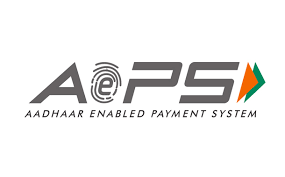
TRUSTED AEPS COMPANY'S
AEPS (Aadhaar Enabled Payment System): A Comprehensive Overview
The Aadhaar Enabled Payment System (AEPS) is a secure, convenient, and efficient payment service introduced by the National Payments Corporation of India (NPCI). AEPS is designed to facilitate financial transactions using the Aadhaar number, which is a unique identifier issued by the Indian government to residents. The AEPS system leverages the Aadhaar number to authenticate users and provide a range of banking services, such as cash withdrawals, balance inquiries, fund transfers, and remittances, without requiring a physical debit card or bank account number.
AEPS is part of the broader Digital India initiative, aiming to promote financial inclusion and provide secure and convenient banking services, particularly in remote and underserved areas of India. It allows individuals to conduct financial transactions using their Aadhaar number, biometric authentication (fingerprints or iris scans), and linked bank accounts. This eliminates the need for users to rely on traditional banking infrastructure or carry physical cards.
1. Introduction to AEPS
Launched in 2016, AEPS was developed to make financial transactions more accessible to the masses, especially in areas where physical banking services are not easily available. The primary goal of AEPS is to facilitate financial inclusion by enabling people in rural and remote areas to perform banking transactions without needing access to a bank branch or ATM.
AEPS provides a cashless and paperless method for conducting basic banking services. By using the Aadhaar-based authentication system, AEPS allows individuals to perform transactions securely through their fingerprints or iris scans. The system is widely accepted across India, with several banks, financial institutions, and business correspondents offering AEPS services.
2. How AEPS Works
AEPS is built on the Aadhaar platform that connects individuals’ biometric data to their bank accounts. The system uses a combination of biometric authentication and Aadhaar number to authenticate and authorize financial transactions. Here’s how AEPS works in detail:
- Aadhaar Linking: To use AEPS, an individual must link their Aadhaar number with their bank account. Most banks in India offer the option to link the Aadhaar number to the bank account during account opening or later through the bank's mobile app, website, or a local branch.
- Authentication: When a customer initiates a transaction through AEPS, they must authenticate themselves using biometric data, either through a fingerprint scan or iris scan. This biometric data is compared with the data stored in the Aadhaar database.
- Transaction Process: Once authentication is successful, the system links the person’s Aadhaar number with their bank account and processes the transaction. For example, if the individual wants to withdraw cash, the AEPS system checks the available balance in the account and authorizes the amount requested.
- Transaction Confirmation: After the transaction is completed, the system provides the individual with a confirmation message that includes details of the transaction, such as the amount withdrawn or transferred and the remaining balance.
3. Key Features of AEPS
- Biometric Authentication: AEPS uses biometric data (fingerprints or iris scans) to authenticate users, eliminating the need for PINs or passwords. This ensures a high level of security and accessibility, even for individuals without access to traditional identification methods.
- Aadhaar-Based Transactions: Since AEPS uses the Aadhaar number for authentication, users do not need to remember or carry multiple bank account numbers or debit cards. The Aadhaar number serves as a universal identifier across all participating banks.
- Access to Basic Banking Services: AEPS enables individuals to conduct basic banking transactions, such as balance inquiries, cash withdrawals, fund transfers, and remittances, at any point of access, including bank branches, business correspondents, and micro ATMs.
- 24/7 Availability: AEPS is available 24/7, meaning users can access banking services at any time, even in remote or rural areas where bank branches and ATMs may not be available.
- Financial Inclusion: AEPS aims to bring the unbanked population into the formal financial system. It provides people in remote and rural areas with access to essential banking services without the need for internet connectivity, card-based systems, or a physical bank branch.
4. Types of Transactions under AEPS
AEPS allows for several types of financial transactions, which are as follows:
- Cash Withdrawal (Aadhaar Withdrawal): This service allows individuals to withdraw cash from their bank account at any Aadhaar-enabled ATM or through Business Correspondents (BCs). The withdrawal is authorized through biometric authentication (fingerprints or iris scans) and does not require the user to carry a debit card.
- Balance Enquiry: Users can check the balance of their linked bank account by authenticating their identity using Aadhaar and biometric data. This is especially useful for individuals who may not have access to ATMs or online banking services.
- Fund Transfer (Aadhaar-to-Aadhaar Transfer): AEPS enables users to transfer funds from one bank account to another using only their Aadhaar number and biometric authentication. This feature is particularly useful for sending money to family members in remote areas without requiring access to a bank branch or internet-based payment systems.
- Aadhaar-to-Bank Transfer: AEPS also allows individuals to send money to someone’s bank account by simply using their Aadhaar number for authentication, facilitating easy and secure transfers.
- Govt. Subsidy & Welfare Payments: AEPS helps in the disbursement of government welfare schemes, subsidies, and pensions directly into the bank accounts of beneficiaries. This ensures that the benefits reach the intended recipients without delays.
5. Benefits of AEPS
- Easy Access to Financial Services: AEPS provides individuals with access to banking services in rural and remote areas where traditional banking infrastructure may be lacking. Users can access their accounts at micro ATMs, Business Correspondents (BCs), or even directly through government-authorized kiosks.
- Security: The use of biometric authentication ensures that only the authorized individual can access their bank account, making AEPS a secure and reliable method of banking.
- No Need for Physical Cards: Unlike traditional banking systems that rely on debit cards or ATM cards, AEPS does not require users to carry physical cards, thus reducing the risk of loss or theft.
- Financial Inclusion: AEPS is a step towards financial inclusion in India, especially for people who do not have access to traditional banking infrastructure. By using the Aadhaar number and biometric authentication, AEPS allows the unbanked population to participate in the formal financial system.
- Reduced Dependency on Internet Services: Unlike mobile banking or internet banking, AEPS does not require internet access to conduct transactions. This makes it an ideal solution for rural areas where internet connectivity may be poor or non-existent.
- Cost-Effective: AEPS reduces the need for building costly physical infrastructure such as ATMs and bank branches in remote areas. By enabling banking services through Business Correspondents and micro ATMs, AEPS helps reduce operational costs for banks.
6. Challenges and Limitations of AEPS
- Biometric Authentication Issues: AEPS relies on biometric authentication, and sometimes, fingerprints or iris scans may not work accurately due to various factors such as poor quality fingerprints or worn-out biometric data. This can lead to authentication failures, particularly in older people or those who work with their hands.
- Limited Awareness: While AEPS has been widely promoted, many people, especially in rural areas, may not be aware of the system and its benefits. This lack of awareness can limit the system’s effectiveness.
- Network Connectivity Issues: Although AEPS does not require internet access for each transaction, it still relies on network connectivity for authentication and transaction processing. In remote areas with poor network coverage, AEPS may face delays or errors in processing transactions.
- Aadhaar Dependency: AEPS is entirely dependent on the Aadhaar system. In cases where a person’s Aadhaar number is not linked to their bank account or if there are issues with the Aadhaar database, the person may be unable to access AEPS services.
- Lack of Standardized Infrastructure: While AEPS is designed to be used with any Aadhaar-enabled bank, the availability of infrastructure like micro ATMs and business correspondents may vary across regions, especially in underserved areas.
7. Conclusion
The Aadhaar Enabled Payment System (AEPS) has emerged as a groundbreaking initiative in India’s quest to promote financial inclusion and provide accessible, secure, and convenient banking services to all. By leveraging the Aadhaar number and biometric authentication, AEPS has revolutionized the way financial transactions are conducted, especially in remote and underserved regions.
With the ability to perform basic banking services like cash withdrawals, balance inquiries, and fund transfers without the need for debit cards or internet connectivity, AEPS offers a much-needed solution for people who do not have access to traditional banking systems. While there are challenges such as biometric authentication issues and network connectivity problems, the AEPS system continues to grow and evolve, playing a pivotal role in bringing more citizens into the formal financial system.
As India continues to push for Digital India and financial inclusion, AEPS will undoubtedly play an essential role in ensuring that everyone has access to essential banking services, regardless of their location or technological literacy.
